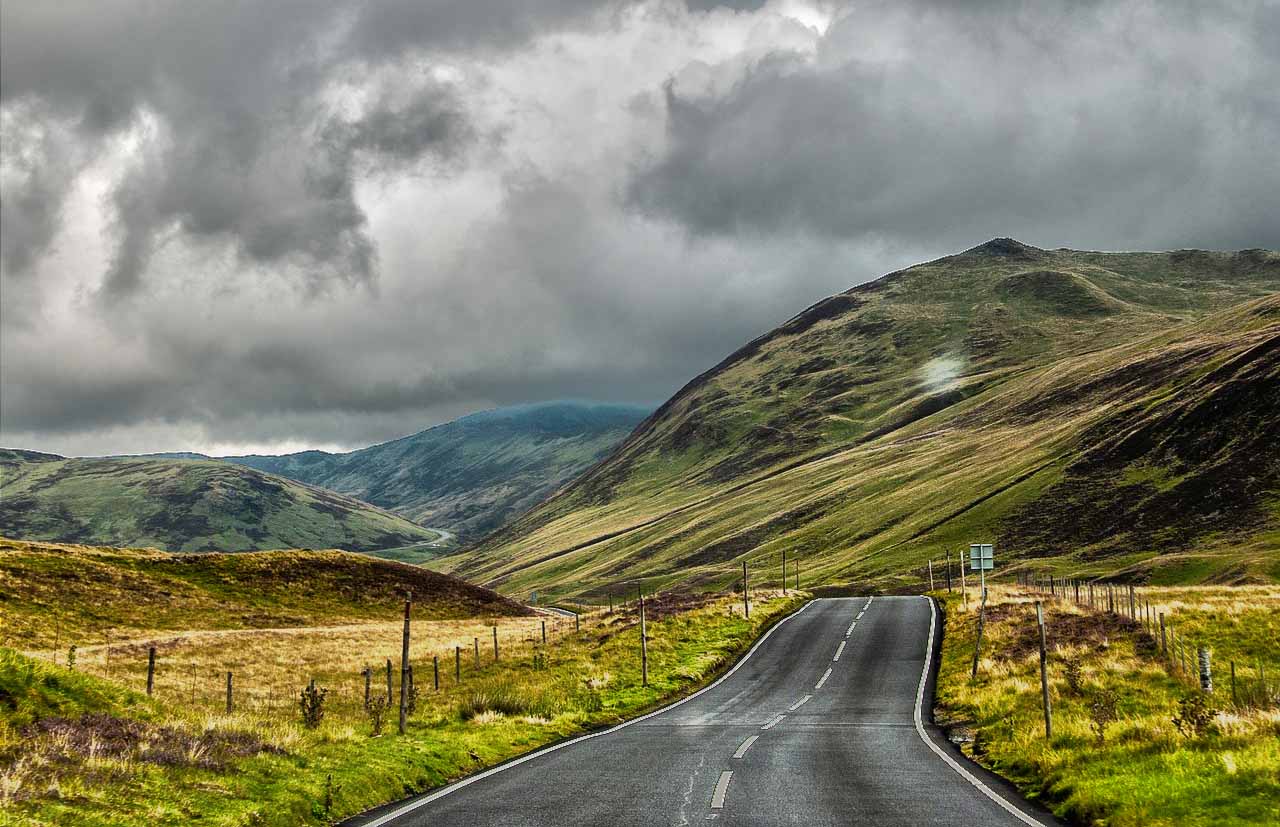Here are some valuable information to drive in Scotland.
As always, we recommend following some basic and universal rules: always respect the speed limits. It is forbidden to drive in Scotland after taking alcohol, in quantities greater than 0.50mg per liter of blood. Zero tolerance throughout the country. The checks are quite frequent, and the penalties severe, punished up to 6 months of imprisonment.
BASIC RULES TO DRIVE IN SCOTLAND
In the country yes drive left and overtake on the right. In the early days, it will not be easy to get used to a driving style that is different from the rest of Europe. For some, it could be nothing short of traumatic. All daily gestures will be done in the opposite direction! Change the perception of space, and the way of turning.
Prudence, low speed and respect for the safety distance, will certainly be a good advantage.
It is always necessary to give priority to pedestrians who cross or are about to cross a road; even if there are no pedestrian crossings on the ground.
In the event of an accident, YOU MUST ALWAYS STOP and provide assistance, where necessary. It is always preferable, on both sides, to sign the friendly statement and call the authorities.
Many roads generally pass through evocative landscapes which, for many, are an invitation to stop for a ritual photo. Try to always use common sense and avoid getting in the way. Especially on single track roads.
DOCUMENTS TO DRIVE IN SCOTLAND
Driving license, registration certificate and valid insurance certificate. If you are driving a vehicle that is not your own, we recommend that you take a DELEGATION TO CONDUCT. This is a delegation of the vehicle owner with an authenticated signature. It is not mandatory.
Remember that you can enter with your vehicle, as long as your holiday does not exceed 6 months.
VEHICLE EQUIPMENT
The seat belts must be fastened to all seats, front and back (if any).
Safety devices are not mandatory.
In our opinion, when you travel by car, you should never miss the triangle, reflective vest, and first aid kit.
ROADS AND SIGNS
The Scottish motorway network is not particularly extensive. Suffice it to say that the two longest motorways are the M8 and the M74, respectively 61 and 32 miles.
The M8 is also the most used road in the country, and connects the capital with Glasgow.
They are identified by a sign with a blue background, and the letter M followed by white numbers.
Please note that the motorway is FREE.
Among the most common roads in Scotland, especially on the islands and in the Highlands, there are the Single Track Road. The name leaves room for few misunderstandings. These are single-lane roads, where traffic is allowed from both directions. Often, therefore, you will cross other vehicles coming from the opposite direction. For this reason, these roads are dotted with Passing Place, sort of pitches in which to stop to allow the journey to the other means.
On all British roads, including Scotland, distances are always expressed in miles.
If you rent a car, the speed is expressed in mph.
PETROL
In the big cities, and in the main places of interest, you will always find 24 open distributors, which supply green and diesel petrol.
Only in rural roads, you will find it difficult to find gas stations
SPEED LIMITS
Unless otherwise specified, the speed limits are as follows:
- 30 mph in built-up areas.
- 60 mph outside built-up areas.
- 70 mph on the highway and on dual carriageway roads.
DRIVE IN SCOTLAND WITH CHILDREN
Children up to 12 years, must travel on approved seats, and appropriate for their weight and age.
If they are installed in the opposite direction to the direction of travel, the airbags must be deactivated.


